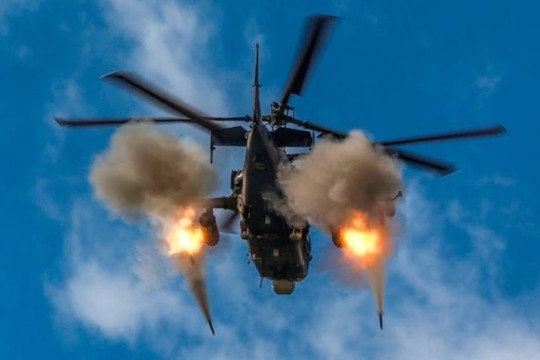Russia’s “dragon teeth” tank traps, minefields and multi-layered fortifications are just one set of obstacles in Ukraine’s budding counteroffensive. Another formidable foe turns out to be airborne: the Russian Ka-52 “Alligator” (photo) attack helicopter, notes ‘Financial Times’.
In one of the campaign’s early battles near Orikhiv, in Zaporizhzhia province, a Ukrainian infantry company drove into a minefield and reportedly came under fire from Alligators, losing several US-supplied Bradley infantry fighting vehicles and a German-built Leopard 2 tank.
It was unclear how many vehicles were destroyed or later recovered. Nor has Kyiv shed light on to how many Ukrainian soldiers were killed. But images of that battle, shared by Russian media and pro-war bloggers, spoke powerfully of the obstacles Ukraine’s forces will have to overcome.
Ukrainian troops and western analysts and officials have long highlighted the role of aviation, including Russian fighter jets and attack helicopters in picking off Ukrainian armour, and the lack of air defences at the frontline to deter them.
“I personally saw how, during our assault, the enemy [fighter jet] aircraft immediately fired on our advancing troops using laser guided bombs from a far distance,” said Stas, a soldier with an elite drone surveillance unit helping infantry regain lost territory in the south of the country. It was not an isolated incident, he said.
“In the constant contest between aviation measures and countermeasures, it is likely that Russia has gained a temporary advantage in southern Ukraine, especially with attack helicopters employing longer-range missiles against ground targets,” Britain’s defence intelligence tweeted over the weekend.
Russian fighter jets and helicopters are now exploiting deficiencies in Ukraine’s air defences at the frontline. Kyiv operates different Soviet-era surface-to-air missile systems, but has too few to provide full cover, leaving it partly reliant on very short-range shoulder-launched missiles (Manpads) which require the operator to see the target before shooting.
“Manpads are not very effective at night,” said a Ukrainian air force pilot. “We need systems with detection and guidance — radar or optical-electronic systems,” the pilot added.
Justin Bronk, senior research fellow at the Royal United Services Institute, a London-based think-tank, said that Russian helicopters fitted with anti tank guided missiles “were always going to be a much greater threat to Ukrainian forces during a counteroffensive
“They can hover, spot for targets and fire anti-tank guided missiles from beyond the range of shoulder-fired Manpads or anti-aircraft fire,” Bronk said.
This leaves Ukrainian forces having to constantly balance the risk of deploying their scarce surface-to-air missile systems closer to the front lines against the cost of leaving their armoured vehicles exposed to Russian gunfire, concludes ‘Financial Times’.
read more in our Telegram-channel https://t.me/The_International_Affairs

 12:04 23.06.2023 •
12:04 23.06.2023 •























